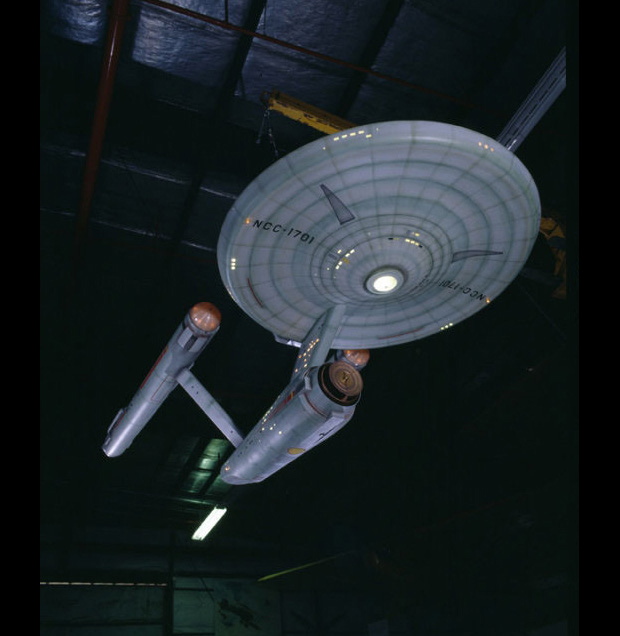See USS Enterprise Morph from Sailing Ship to Starship (Video)

A new video infographic shows off some of the vessels that have borne the name "Enterprise" over the years, from an 18th-century sailing ship to multiple iterations of the famous spacecraft in the fictional "Star Trek" universe.
The 43-second-long video begins with the 85-foot-long (26 meters) oceangoing Enterprise from the 1700s, then progresses to the 825-foot-long (251 m) USS Enterprise aircraft carrier that (among other adventures) served in World War II after receiving an alert at sea that the Japanese had attacked Pearl Harbor.
From there, the video shows the space shuttle Enterprise, a test version of NASA's spaceship that ferried astronauts to and from low-Earth orbit from 1981 through 2011. Enterprise never flew in space, but it performed several glide tests with NASA astronauts at the controls.
Originally, the space shuttle prototype was supposed to be named Constitution, but it was changed to Enterprise after a massive write-in campaign by "Star Trek" fans. Today, the vessel is on display at the Intrepid Sea, Air & Museum in New York City.
Some versions of the USS Enterprise from "Star Trek" shown in the video include Captain James T. Kirk's famed ship (NCC-1701) and its successor (NCC-1701-A); the spacecraft on which Kirk was lost in space (NCC-1701-B); and the versions piloted centuries later by Captain Jean-Luc Picard (NCC-1701-D and NCC-1701-E).
The NCC-1701-E Enterprise measures 2,250 feet (868 m) long and was in service from the years 2372 through 2379, according to the video.
The video was created by PicClick.com, which eBay buyers use to search for items similar to their desired product based on pictures.
Breaking space news, the latest updates on rocket launches, skywatching events and more!
“The USS Enterprise has a grand history spanning centuries of exploration. Watch as the famed ship morphs through each iteration!” the PicClick representatives wrote in their description of the video, which you can watch on YouTube: https://www.youtube.com/watch?v=cVTqyWPESoU.
Follow Elizabeth Howell @howellspace, or Space.com @Spacedotcom. We're also on Facebook and Google+. Originally published on Space.com.

Elizabeth Howell (she/her), Ph.D., was a staff writer in the spaceflight channel between 2022 and 2024 specializing in Canadian space news. She was contributing writer for Space.com for 10 years from 2012 to 2024. Elizabeth's reporting includes multiple exclusives with the White House, leading world coverage about a lost-and-found space tomato on the International Space Station, witnessing five human spaceflight launches on two continents, flying parabolic, working inside a spacesuit, and participating in a simulated Mars mission. Her latest book, "Why Am I Taller?" (ECW Press, 2022) is co-written with astronaut Dave Williams.
